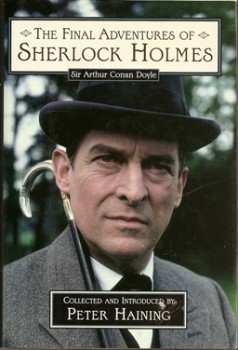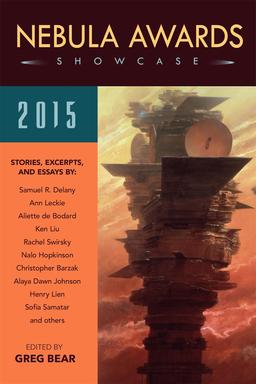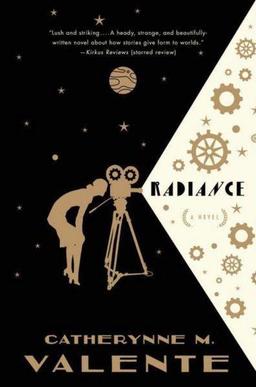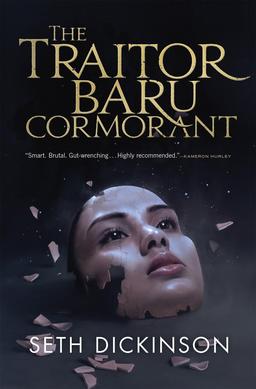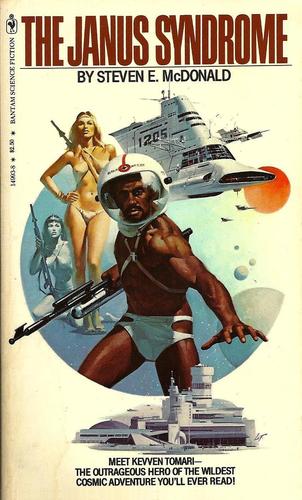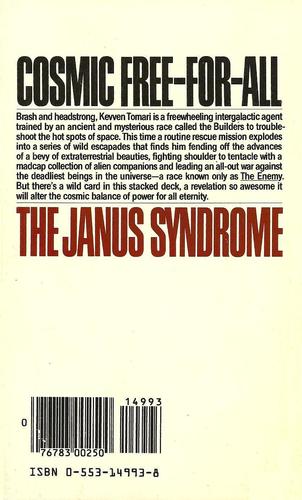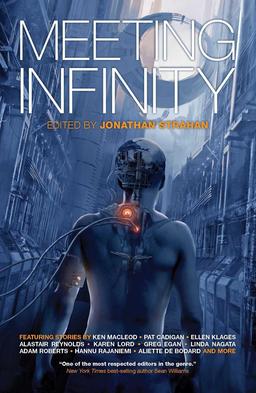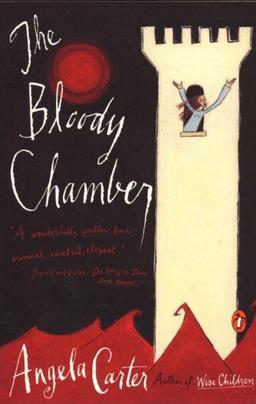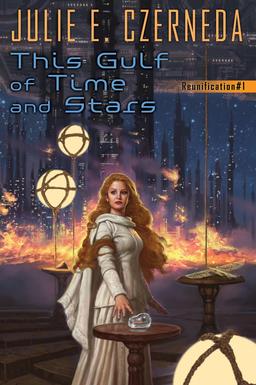Vintage Treasures: Cautionary Tales by Chelsea Quinn Yarbro
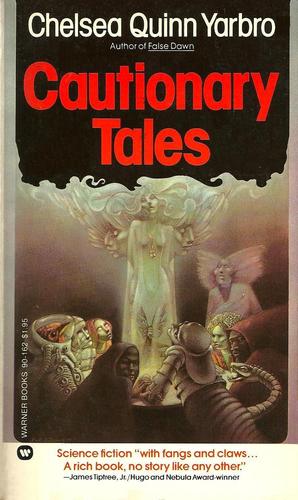 |
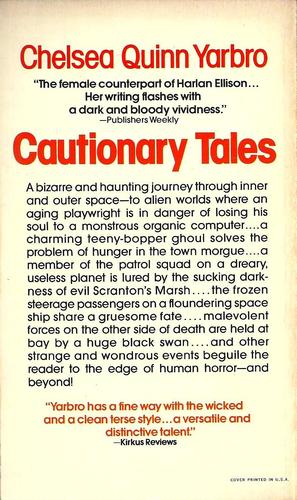 |
There’s nothing quite like finally laying your hands on a book that’s eluded you for years. That happened this week with Chelsea Quinn Yarbro’s first collection, Cautionary Tales, published in paperback by Warner Books in 1980 with a moody and gorgeous cover by Leo & Diane Dillon, showing a group of aliens and humans conducting a (surprisingly effective) seance. Cautionary Tales collects 13 science fiction and dark fantasy stories published between 1971 and 1978 in magazines like Galaxy and IF, and anthologies like Chrysalis. and Faster Than Light.
It has an introduction by none other than James Tiptree, Jr, only recently revealed as ex-Army major and CIA operative Alice Sheldon in 1980. Tiptree writes:
If you are looking for the jolly engineering dilemmas of plastic space jocks on the Aldebaran mail run, look elsewhere. You will indeed find a spaceship here, but what goes on among the all-too-real crew of “Dead in Irons” is harsh human shame, a story of innocence compelled to participate in ghastly deeds, able at the end only to strike one lost blow of vengeance. Deftly touched behind the grind of pain is a convincing extrapolation of the star civilization that bore it.
On the other hand, and just to surprise you, Yarbro has given here what is the only merry, even charming tale of After the Holocaust that I can recall: “Frog Pond,” And for still another facet, view the curdlingly mundane problems besetting a lady ghoul attempting to gain access to the city morgue, in “Disturb Not My Slumbering Fair.” (It should be noted that Yarbro does a brisk business in vampires in another of her many lines of work.) But for pure alien beauty, remarkably seen through alien eyes, “Un Bel Di” is quite unforgettable, even apart from the cruelty that is perpetrated there.
